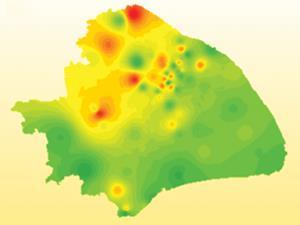Nitrogen dioxide emissions reflect trends in political climate, according to Nasa research
Following the COP21 climate conference (21st session of the Conference of Parties) in France, Nasa has released a series of global satellite maps showing air pollution trends over the past decade.
The landmark agreement, made between nearly 200 countries last week, is set to limit the rise of global temperatures to below 2°C above pre-industrial levels. Countries that ratify the deal will have to stem their greenhouse gas emissions within the next century.
The onset of previous regulations to improve air quality can be traced in pollution patterns, according to Bryan Duncan, an atmospheric chemist who led the research, in a Nasa statement.
Duncan and his colleagues have monitored levels of nitrogen dioxide, a common air pollutant, from 2005–2014 using Nasa’s Aura satellite. Although the US and Europe are the biggest nitrogen dioxide emitters, both have reduced their emissions. Europe’s output has decreased by 50% – a cut attributable to the introduction of strict environmental regulations, according to the researchers.
China’s emissions have grown with their increasing economic power from 20% to 50% in the same period.












No comments yet